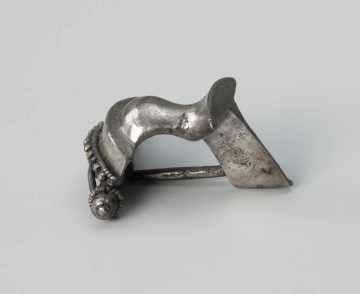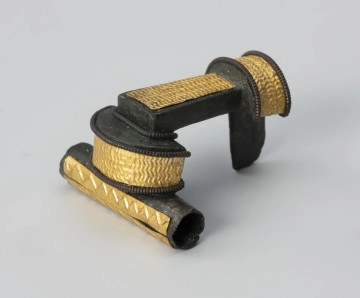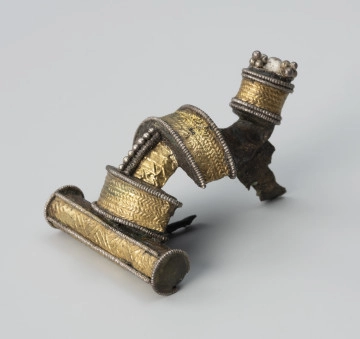
Fibula decorated with filigree
150 — 200
National Museum in Szczecin
Part of the collection: Antiquity
The antler comb consists of tooth plates enclosed with two external connecting plates and joined together with rivets. It is a complex type of comb design. The early antler combs from the Roman period were made from only one antler plate. However, over time, the teeth would break and fall off, and the comb would no longer serve its purpose. The introduction of movable tooth plates greatly extended the durability of the combs, as it was easy to replace a worn component with a new one. The most advanced designs had their tooth plates additionally divided into smaller segments, which could be replaced individually if necessary. The comb from Borkowice is dated to the 3rd century and comes from the cemetery of the Dębczyno group. It probably originally comes from the grave goods from a destroyed grave. The necropolis in Borkowice was discovered by accident in 1892 during sand excavation on the hill between the village and the road leading from Kołobrzeg to Koszalin. This land belonged at that time to a farmer named Kropp. A total of seven inhumation burials were discovered at the cemetery. Some of them had stone structures, perhaps the remains of stone burial chambers. No specific information about the fieldwork has been retained in the archives. Some of the objects from the cemetery in Borkowice went to the then Museum in Koszalin, others to the Museum in Szczecin.
Bartłomiej Rogalski
Author / creator
Object type
comb
Technique
cutting
Material
antlers
Origin / acquisition method
acquisition
Creation time / dating
Creation / finding place
Owner
nieznane
Identification number
Location / status

150 — 200
National Museum in Szczecin

150 — 200
National Museum in Szczecin

150 — 200
National Museum in Szczecin
DISCOVER this TOPIC
National Museum in Lublin
DISCOVER this PATH
Educational path